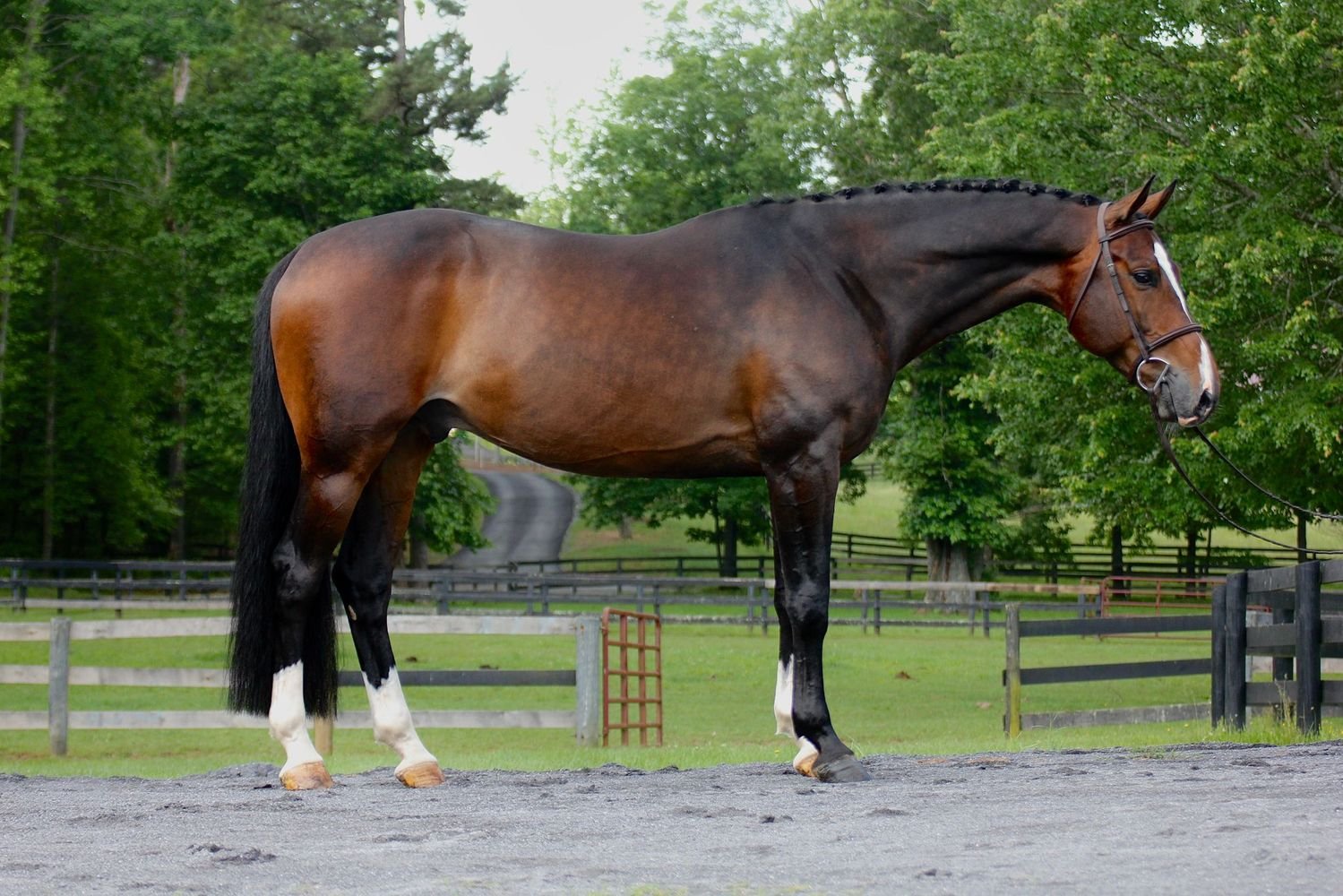A Comparative Case Study of Hunter and Jumper Horse
Hey, equestrian enthusiasts! Ever wondered about the dashing world of hunter and jumper horses? Well, saddle up because you're in for a treat. Today, we're diving deep into the fascinating differences between these two athletic superstars of the equine sports world. Whether you're a seasoned rider or someone who gets excited at the mere sight of a horse, this is your guide to understanding what sets hunter and jumper horses apart.
The Graceful Hunters: Where Elegance Meets Athleticism
Imagine a horse gliding over obstacles with the elegance of a ballet dancer. That's your hunter horse. These beauties compete in what's known as the hunter discipline, where it's all about style, grace, and manners over mayhem. The hunter ring isn't the place for the speedsters. Instead, it's where the poised and polished come to shine.
Hunter horses are the epitome of control, judged on their form over fences, smooth movements, and the seamless partnership with their rider. Picture them leaping over fences that mimic natural obstacles in the most dignified manner. They're like the royalty of horse sports, where every jump is a statement of refinement.
The Bold Jumpers: Speed Demons of the Equine World
Now, switch gears and picture a horse charging towards a series of challenging obstacles. That's the world of the jumper horse—where agility, speed, and bravery are the name of the game. Jumper competitions are heart-pounding races against the clock, with horse and rider teams navigating complex courses designed to test their mettle.
These equine athletes are judged purely on their ability to clear obstacles in the shortest amount of time, making for an exhilarating spectacle. It's a high-octane world where the slightest misstep can mean the difference between victory and defeat. Jumper horses are the daredevils, always ready to turn on a dime and leap towards their next challenge.
The Tale of Training: Crafting Champions
Training a hunter or jumper horse is an art and science, requiring patience, skill, and a deep understanding of each horse's unique abilities. Hunters are schooled to approach their jumps with a rhythm and grace, focusing on maintaining a consistent pace and showcasing their natural elegance.
Jumpers, on the other hand, undergo rigorous training to enhance their speed, agility, and responsiveness. They're the athletes in peak condition, ready to tackle the most demanding courses with fearless determination.
Hunter classes are judged on several key components that collectively contribute to the overall impression and performance of the horse and rider. Here's a breakdown of how hunters are typically scored:
Performance and Ability: This includes the horse's jumping style, manners, pace, and consistency. Judges look for horses that jump with good form, displaying a round back over fences (known as a bascule), even pace throughout the course, and smooth, effortless movements.
Conformation: In some hunter classes, the physical appearance and structure of the horse are considered, especially in "model" classes or when there is a conformation division. A horse that exemplifies the ideal breed standards with correct conformation may score higher.
Manners: Hunters should appear obedient and willing, demonstrating good manners by responding promptly to the rider's cues without resistance or fuss.
Way of Going: This refers to the horse's movement and overall carriage. Judges look for a smooth, flowing gait, with a focus on how well the horse covers ground. An ideal hunter moves with long, low strides that eat up the distance effortlessly.
Quality: This is an assessment of the horse's overall appeal, which can be somewhat subjective. It includes the horse's presence, attractiveness, and the impression of being a pleasure to ride.
Jumping Form: Judges pay close attention to how the horse approaches, takes off, flies over, and lands after a fence. They look for horses that jump with their knees up and even, a rounded back over the fence, and a soft, balanced landing. Faults are given for knocking rails, refusing jumps, or displaying poor form over fences.
Course Execution: This involves the rider's ability to navigate the course in a manner that showcases the horse's best qualities. It includes making smooth turns, maintaining an even pace, choosing the correct lines between jumps, and demonstrating control and accuracy.
Turnout: While not a scored category per se, the overall appearance of horse and rider can influence the judge's impression. A well-groomed horse and neatly presented rider reflect positively on the quality and care of the presentation.
Scores are typically given on a numerical scale, with 100 being perfect, though it's rare to see such high scores. A score in the 80s is considered very good, and scores in the 70s are more common and still respectable. Major faults like refusals, knocking down a rail, or breaking stride can significantly lower a score. Minor faults, such as slight inaccuracies in pace or minor issues in form, result in smaller deductions.
Remember, the essence of hunter competition is to display the horse as a safe, smooth, and stylish mount suitable for riding over fences, with an emphasis on natural athleticism and grace.
When scouting for a hunter prospect, whether you're an experienced equestrian or new to the scene, there are several key qualities and characteristics to keep an eye out for. The ideal hunter horse embodies not just physical attributes but also showcases a demeanor and ability that set it apart for the hunter ring. Here’s a guide to help you identify a promising hunter prospect:
‘Bryn’ - Beautiful Hunter sold by our team to SPRING PLACE FARM
PLOT - stunning prospect sold by our team to Spring Place Farm
1. Temperament
Calm and Even-Tempered: Hunters should have a calm, composed disposition. They should not be easily spooked and must exhibit patience, both in and out of the ring.
Willingness to Work: Look for a horse that is eager to please and enjoys its job. A good hunter prospect should be responsive to rider cues without being overly sensitive.
2. Movement
Smooth Gaits: A fluid, graceful walk, trot, and canter are essential. The movement should be effortless and cover ground easily, with a natural, long stride that can easily adjust to different distances between fences.
Good Form Over Fences: Seek a horse that jumps with a good bascule (the horse’s natural arc over a jump), tucks its knees up neatly, and keeps its back rounded. This form not only looks attractive but also indicates good technique and ability to handle various types of jumps.
3. Conformation
Balanced Build: The horse should have a proportionate build where its body length, leg length, and neck form a harmonious balance. This affects not just the horse's appearance but its ability to perform smoothly and efficiently.
Sound Legs and Feet: Strong, clean legs and well-shaped feet are non-negotiable for a hunter prospect. This is crucial for the horse’s longevity and ability to train and compete without frequent injuries.
4. Ability to Maintain a Steady Rhythm
Hunters are judged on their ability to maintain a consistent pace throughout a course. Look for a horse that can keep an even tempo and doesn’t rush or lag before, during, or after jumping.
5. Jumping Ability
Scope: The horse should have the scope for jumping, meaning it has the power and ability to clear fences confidently at the required heights and spreads found in hunter courses.
Technique: Pay attention to the horse’s technique. It should approach, take off, and land smoothly, with the ability to roll over the jump effortlessly.
6. Trainability and Mindset
A good hunter prospect is one that learns quickly and can adapt to the training required to refine its natural abilities. It should be able to handle the pressures of competition environments calmly.
7. Appearance and Presentation
While not the most crucial factor, a horse that presents well (good coat condition, well-muscled, overall well-cared-for appearance) can make a positive impression in the show ring, where turnout is considered.
8. Experience and Pedigree
While a strong pedigree can be a good indicator of potential, it’s not the only thing to consider. A horse with a solid training foundation or some show experience can also be a valuable prospect.
9. Compatibility
Finally, and importantly, the horse must be a good match for its rider. This means the horse's size, temperament, and level of training should be suitable for the rider's skill level and goals.
Identifying a promising hunter prospect requires a blend of knowledge, intuition, and sometimes, a bit of luck. Always consider bringing a knowledgeable trainer or experienced horseperson with you when evaluating potential prospects to ensure that you find a horse that meets your needs and expectations.
In your journey to discover the perfect hunter or jumper prospect, the myriad of options and considerations can be overwhelming. But fear not, for you are not alone in this journey. As the CEO of BRIDL, I am here to extend a guiding hand and expert eye to navigate the vast and vibrant European horse market.
At BRIDL, we specialize in connecting discerning riders with amazing horses. Our extensive network across Europe enables us to access a diverse range of horses, from promising youngsters with potential to bloom, to seasoned competitors ready to make their mark in the ring. Understanding the nuances of what makes a great hunter prospect is our forte, from impeccable temperament and graceful movements to flawless form over fences and beyond.
Our commitment goes beyond merely finding a horse; we strive to find your perfect equestrian partner. With a personalized approach, we consider your riding goals, preferences, and style to match you with a horse that not only meets but exceeds your expectations. Whether you are stepping into the hunter scene for the first time or looking to elevate your competition portfolio, our curated selection of European horses is where your search begins and ends.
Take the leap and make your hunter prospect dream a reality. Get in touch with me, Marie Marks at BRIDL, and let us embark on this exciting journey together. With BRIDL by your side, your perfect hunter prospect awaits in Europe, ready to gallop into your life and bring your equestrian aspirations to fruition.



